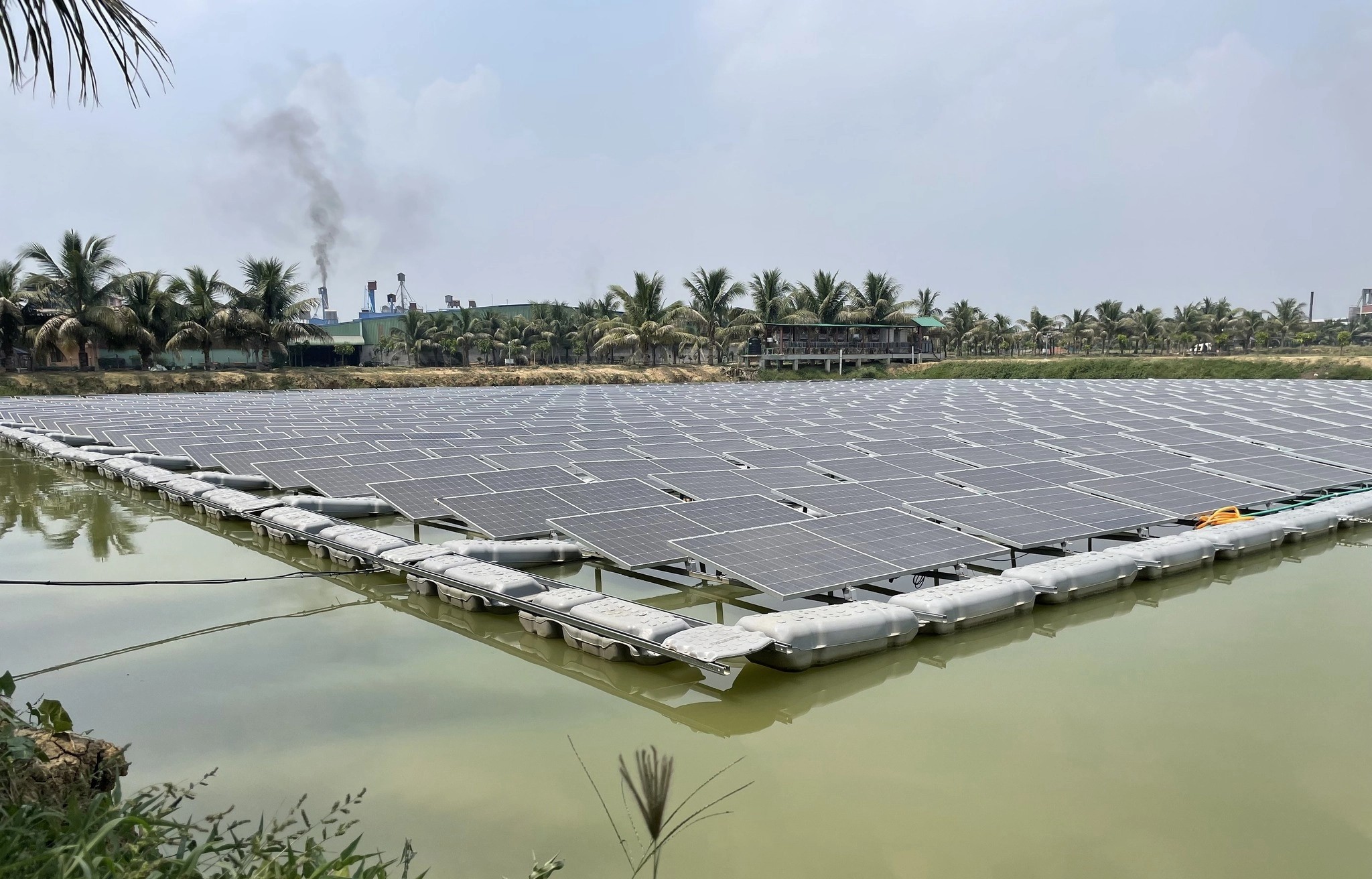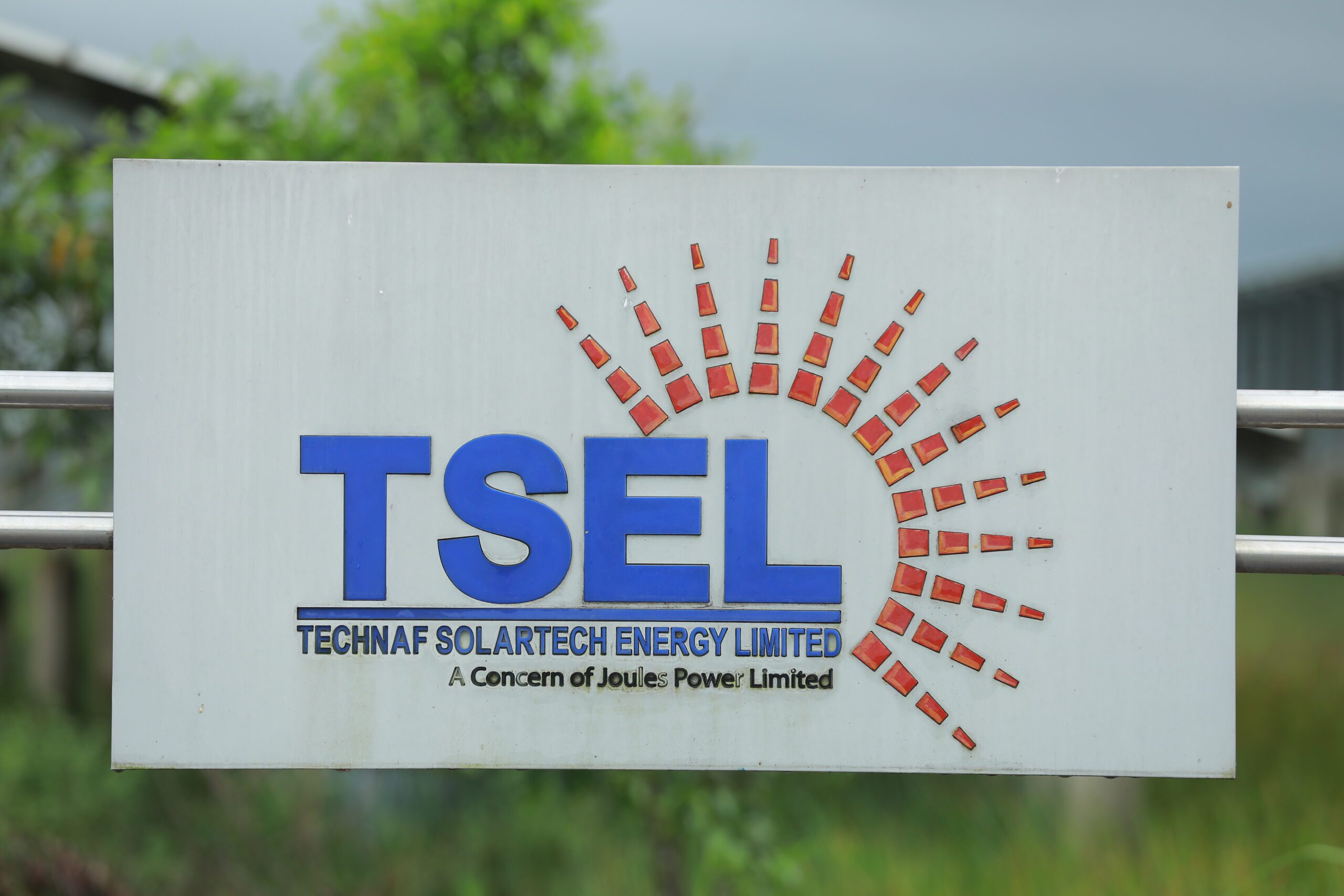The first floating solar panel power is connected to the national grid
September 6, 2023
The production capacity of the floating solar power plant at Bulanpur in Chapainawabganj is 2.3 megawatts
The solar panel of Bulanpur in Chapainawabganj is located on a fish farm.
Production has started at the first floating solar power plant in the northern district of Chapainawabganj; The entrepreneurs said to get electricity at the rate of 800 kilowatts per day from a reservoir in the fish farm.
State Minister for Power Nasrul Hamid is also excited about such an environment-friendly achievement at this time of country’s load shedding and energy crisis. And if the project is successful, the implementing company is talking about 70 percent of the cost.
On Tuesday, State Minister Nasrul wrote in a Facebook post that Bangladesh’s first floating solar power plant at Bulanpur in Chapainawabganj has been connected to the national grid. The total production capacity of the power plant is 2.3 MW. The project will provide fish and electricity from the same reservoir.
“We will be closely monitoring the fish growth in the reservoir over the next few months. If the ecological balance is intact, we will take the initiative of producing electricity on a larger scale in different reservoirs of the country later.”
Due to the negative impact on the environment, efforts are being made to reduce fossil fuels and increase renewable energy, but implementation of such projects in Bangladesh is difficult due to ‘lack of space’.
However, recently, the government is talking about the maximum use of solar power due to the shortage of energy and the unbridled price increase in the international market.
According to Government Sustainable and Renewable Energy Development Authority (SREDA), currently 937.3 MW electricity is available from various projects including solar home system, rooftop solar, net metering system, grid solar system. The electricity department has started implementing a bunch of projects to get 2000 megawatts of electricity from solar power within the next two years.
As a result, if the maximum daily electricity demand in the country is calculated at a little more than 16 thousand megawatts, about 12 and a half percent of the country’s electricity will be obtained from solar panels.
In a recent speech, State Minister Nasrul said, “We have taken drastic measures to increase the production of solar power.” We will generate 2000 megawatts of electricity from solar within the next two years.
“About 300 acres of non-agricultural land is required to generate 100 MW of solar power. To make 2000 megawatts, 6000 acres of land will be required. Availability of land is a major challenge in this densely populated country.”
‘Save 70% if successful’
Jules Power, a private power generation company, is implementing this project in Chapainababaganj in the factory area of Nawab Auto Rice Mill.
Jools Power senior official Nahiduzzaman told bdnews24.com that 50 percent of a 6-acre reservoir has been used for the floating solar power project. Since fish farming is going on here, food grade plastic floats are used so as not to harm the fish. Its life time is 20 years. Anchoring system is kept in consideration of storm or tornado.
“800 KW electricity is coming from the reservoir area. The rest of the project’s electricity is coming from solar panels installed on the roofs of various buildings in the factory.”
He said that rice mills require 2.5 megawatts of electricity daily. During the day, almost the entire demand can be supported by solar power. And if there is no load in the factory for some reason, the electricity will go to the grid.

The power plant at Bulanpur in Chapainawabganj has a production capacity of 2.3 megawatts.
Nahid Hossain, owner of Nawab Rice Mill said, “Our main objective is fish farming. We experimentally installed solar power in that pond. Our power generation has started.
“Today around 1,200 kilowatts of electricity was being produced. If the results are good, it will be popular as a profitable project for other fish farms in Bangladesh.”
Stating that there is no difficulty in fish farming in the panel, Nahid said, “We are already farming native fish like Rui, Katla here. We also caught fish a few times. As there are no structures in the water part, there was no problem in fishing. If desired, the solar panels can also be changed on the same day.”
When asked how cost effective the project would be in terms of electricity consumption, he said, “We required a maximum of two and a half megawatts of electricity.” The factory requires about 50 lakh rupees of electricity per month on an average. If the project is successful, we expect to save 70 percent of the cost.”


